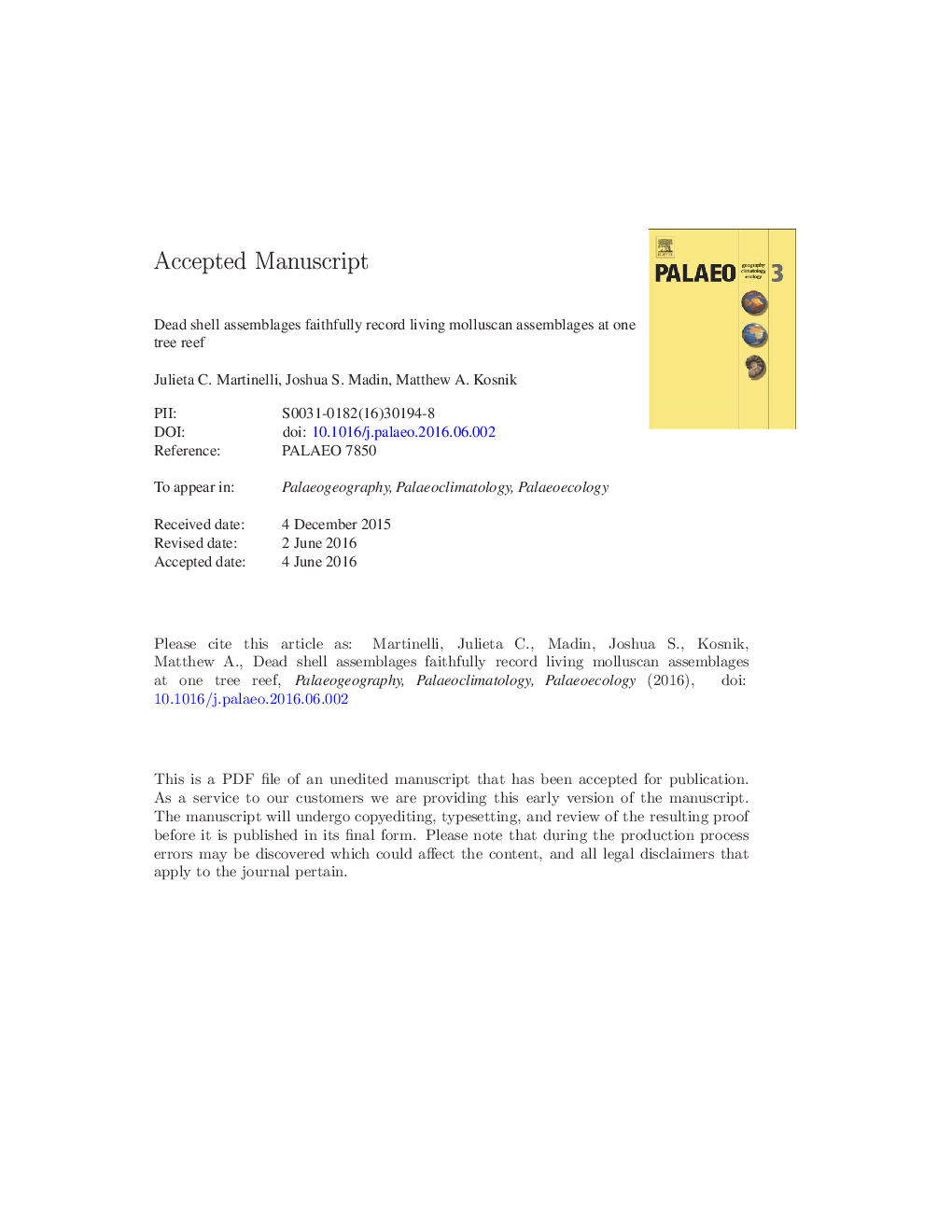| کد مقاله | کد نشریه | سال انتشار | مقاله انگلیسی | نسخه تمام متن |
|---|---|---|---|---|
| 6349166 | 1622134 | 2016 | 53 صفحه PDF | دانلود رایگان |
عنوان انگلیسی مقاله ISI
Dead shell assemblages faithfully record living molluscan assemblages at One Tree Reef
ترجمه فارسی عنوان
مونتاژهای پوسته مادری با احتیاط مجموعه های ملوسکان زندگی را در یک ردیف یک درخت ثبت می کنند
دانلود مقاله + سفارش ترجمه
دانلود مقاله ISI انگلیسی
رایگان برای ایرانیان
کلمات کلیدی
موضوعات مرتبط
مهندسی و علوم پایه
علوم زمین و سیارات
فرآیندهای سطح زمین
چکیده انگلیسی
Reef-associated sediments accumulate over time recording the history of biological communities. The agreement between live and dead assemblages has been extensively studied, because discrepancies between the two can reveal taphonomic bias, anthropogenic impact, and/or a decrease in temporal resolution of dead assemblages to centennial scales (i.e., time averaging). Given the potential of sedimentary assemblages to provide temporal perspectives on the history of modern communities, assessments of live-dead agreement in reef mollusk assemblage composition are necessary and timely for understanding rapid environmental change. One Tree Reef (OTR) (southern Great Barrier Reef, Australia) has had very little direct anthropogenic influence over the past four decades, making it a good system for focusing on taphonomic patterns. Live (n = 1335) and dead (n = 6919) molluscan assemblages were collected from three shallow (6 m) carbonate soft-sediment lagoons. Diversity and evenness metrics indicated no significant difference between the live and dead assemblages, and dead assemblage rank order abundance explains 82% of that of the live assemblage. Differences in composition were largely due to sample size, the low probability of sampling rare species and to a lesser degree differences in skeletal durability. Taphonomic factors were responsible for less than 20% of the differences in species composition between live and dead shell assemblages. The live molluscan assemblage sampled was similar to the live assemblage sampled 30 years ago. Given that time averaging is approximately 19 years in the OTR lagoon, we conclude that the composition of the living assemblage has remained largely unchanged for the last 30 years. These findings indicate that dead assemblages preserved in shallow, fully carbonate environments primarily reflect the composition of the original source communities, making them useful to identify recent changes in coral reef areas where anthropogenic impacts are present.
ناشر
Database: Elsevier - ScienceDirect (ساینس دایرکت)
Journal: Palaeogeography, Palaeoclimatology, Palaeoecology - Volume 457, 1 September 2016, Pages 158-169
Journal: Palaeogeography, Palaeoclimatology, Palaeoecology - Volume 457, 1 September 2016, Pages 158-169
نویسندگان
Julieta C. Martinelli, Joshua S. Madin, Matthew A. Kosnik,
